As a connoisseur of all things poultry, I’ve found myself right in the middle of a heated kitchen standoff: the chicken wings controversy. An ongoing bone of contention (quite literally) between the merits of wingettes and drumettes. It’s a debate that tickles the taste buds of chicken wing enthusiasts from the saucy streets of Buffalo, NY—arguably the Mecca for wing lovers—right down to my own dining table. With a penchant for sizzling flavors and crispy textures, I am drawn to uncover the pros and cons of wingettes and drumettes, mulling over Buffalo’s gift to poultry lovers.
Termed by some as the best chicken wing choice, drumettes vs flats, or the bone-in wings saga, this culinary conflict isn’t just about taste—it encapsulates technique, tradition, and personal preference. Whether it’s the saucy embrace of a flat wing known as a wingette or the substantial succulence of chicken drums, there’s more sizzling beneath this debate than the grill can hold.
So let’s embark on this flavorful journey together, where I aim not just to elaborate on the controversy but also to offer a wing-to-wing comparison, helping you decide which side of the fence—or chicken—you land on.
Key Takeaways
- The age-old wingettes vs drumettes debate is defined not only by shape but by divergent eating experiences.
- Wingettes, or flats, present a flat terrain ripe for sauce adhesion and a crispy skin, while drumettes offer a meatier, dip-ready bite.
- Originating from Buffalo, NY, the culture surrounding chicken wings is rich with history and local flavor, influencing preferences worldwide.
- Technique is paramount—from using a sharp knife to the art of butchering, how one prepares wings can influence the drumettes vs flats debate.
- Aside from flavor, nutritional content and cooking methods are pivotal in determining the best chicken wing choice for health-conscious diners.
A Tale of Two Tenders: Unraveling the Wingette and Drumette Mystery
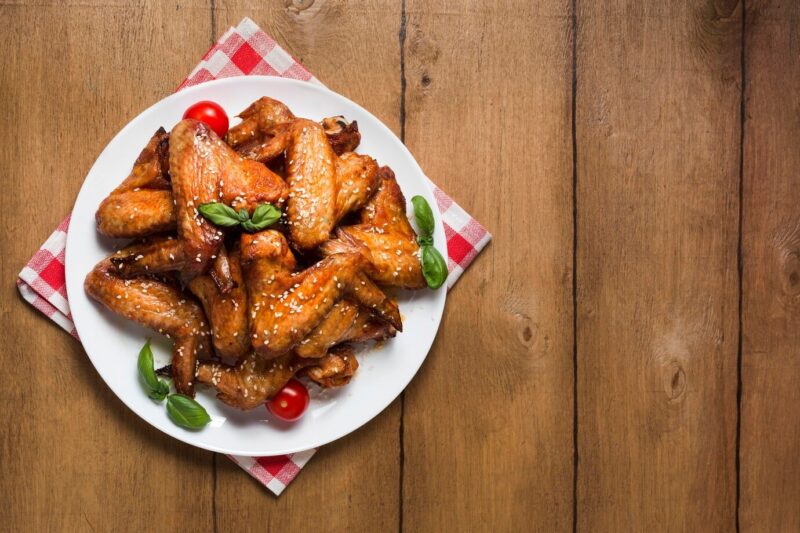
Delving into the Wingette vs Drumette debate, I recognize it’s not just splitting hairs—or rather, primaries and secondaries—it’s an exploration into the very anatomy of chicken wings. This dichotomy goes beyond mere preference, diving into the structural nuances that dictate culinary outcomes and create the foundation of the chicken wings controversy.
The anatomy of a chicken wing is fascinating: wingettes—cleverly prized for their flat shape—boast a higher surface area perfect for optimal sauce retention, while drumettes—admired for their meatiness—feature a larger chunk of protein curled around a single, sturdy bone. However, it’s the inherent contrasts between these two which underscore their epicurean battle. Are you a crunch-craving wing aficionado or a comfort-seeking drum enthusiast? Let’s break down their characteristics.
When prepping these tender morsels, chicken wing preparation proves critical. Precision and care are the cook’s creed when transforming what nature designed into a culinary delight. Whether using a sharp knife to separate joints or snipping through cartilage with kitchen shears, only a thoughtful approach can respect the wing’s integrity and, therefore, your gastronomic experience.
A great wing respects its beginnings—tenderness, flavor, the satisfying crunch, or juicy bite all homage to the hand that wields the knife.
But truth be told, it’s not without challenges. The seeming simplicity of a wingette conceals the intricate dance of bones and cartilage content it houses, often leading to zealous debates at dining tables. Conversely, a drumette’s straightforward structure presents a minor quibble: does the relative scarcity of skin impact that irresistible crispy factor?
- Wingette Anatomy: Flat, two-bone construct, superior sauce adherence, minimum cartilage.
- Drumette Anatomy: Robust, single-bone design, abundant meat, endearing crunch.
While my personal inclinations do not cloud the objective musings here, it’s hard to overlook the fact that not all wing segments are created equal—at least, not when it comes to personal gustatory journeys. And as I ponder over wingettes with their duo of delicate bones versus drumettes resembling tiny drumsticks, it’s clear that the crown for the best chicken wing segment varies greatly according to palate, preference, and preparation.
| Wing Part | Texture | Meat-to-Bone Ratio | Sauce Retention | Cartilage Content |
|---|---|---|---|---|
| Wingette (Flat) | Crunchy Skin | Lower | Excellent | Minimal |
| Drumette | Juicy, Tender | Higher | Lower than Wingette | Noticeable |
What’s undisputable is that wing anatomy plays a significant role in the direction of this relentless debate. Whether analyzed from a structural standpoint or through the taste experiences they deliver, wingettes and drumettes stand firmly across each other in the bout for the chicken wings throne.
Considering the arguments, it appears that the choice between wingette and drumette reflects one’s pursuit of either textural delight or succulent substance. As we dissect this culinary conundrum, let us remember that variety is the spice of life—and indeed, the essence of all chicken wing debates.
The Origins of Our Passion for Chicken Wings
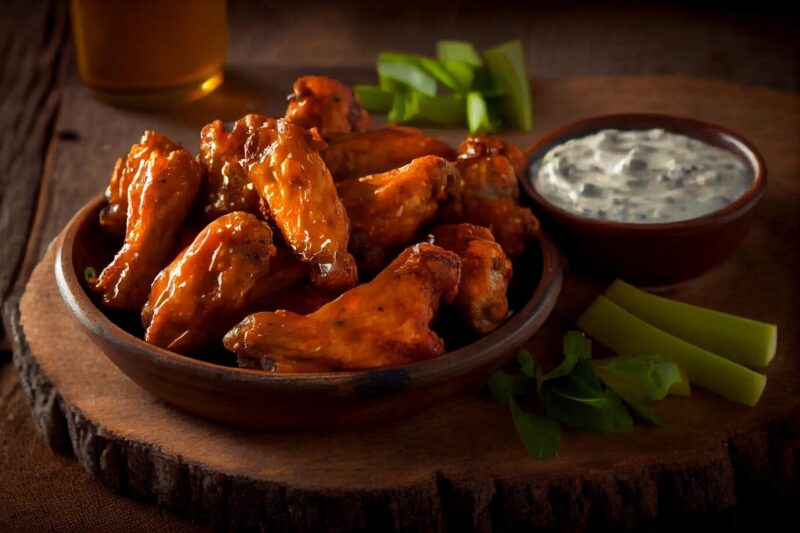
In Buffalo, NY, among the bustling streets and snowdrift landscapes, a culinary sensation took flight that would forever change the appetizer game. The legendary Chicken Wings, a dish that embodies the spirit of a city renowned for its hearty cuisine and even heartier folks. Encased in the walls of institutions like Anchor Bar, Duff’s, and Bar-Bill Tavern, stories of the origin of chicken wings carry a flavor as rich as the sauces slathered upon them.
Buffalo’s Gift to Poultry Lovers
For me, the passion for chicken wings is akin to a cultural embrace, one that I connected with through the dimly lit corners of famed Buffalo joints like Anchor Bar—the purported birthplace of Buffalo wings. Here, locals and travelers alike gather, paying homage to the robust spices and transcendental crunch that define these prized wingettes and drumettes. I’ve often marveled at how Buffalo, NY turned simple chicken wings into gastronomic lore, a story interwoven with community and togetherness, each bite a taste of tradition.
What Sets Apart Wingettes and Drumettes
In the ever-persistent debate of wingettes vs drumettes, lies the anatomy of preference. Both claim their fair share of admirers, each for reasons as distinct as their shapes. Wingettes, or as some might refer to them, chicken wing flats, present an arguably perfect harmony of crispy skin and tender meat, their dual-boned architecture holding the capacity for sauces to pool and coat in generous, lip-smacking layers.
Moving on to their more robust counterpart, the drumettes. Resembling miniature chicken drumsticks, they offer a meat-laden experience that can only be described as delightfully hefty. The ease with which a drumette can be dipped into a pool of blue cheese belies its chunky, satisfying mouthfeel—a sentiment echoed across the numerous establishments of Buffalo where they are voraciously consumed.
As I navigate through the scents and sounds of Buffalo’s famed eateries, it is clear to me that the whole chicken wing anatomy is more than a culinary construct—it’s an experience, a nod to the city’s undying love for this dish.
Whether in disagreement over the merits of wingette and drumette cooking methods or in shared celebration of the sheer joy that a platter of wings brings, the essence of Buffalo’s adoration lies undimmed, propelling wingettes and drumettes into the limelight of chicken wing stardom.
| Chicken Wing Segment | Flavor Profile | Cooking Preference | Buffalo NY Icon |
|---|---|---|---|
| Wingette (Flat) | Evenly crisped, sauce-rich | High heat for maximum crispiness | Anchor Bar’s signature dish |
| Drumette | Substantially meaty, dip-friendly | Grilled or fried to preserve juiciness | Duff’s famous dip-perfect drumettes |
The tale of wingettes and drumettes is not just folklore for a quiet night in Buffalo. It’s a savory chronicle that has made its indelible mark across dinner tables and bar tops, reminding us time and again why we hold such a profound passion for chicken wings.
On the Butcher’s Block: Preparing Wingettes and Drumettes
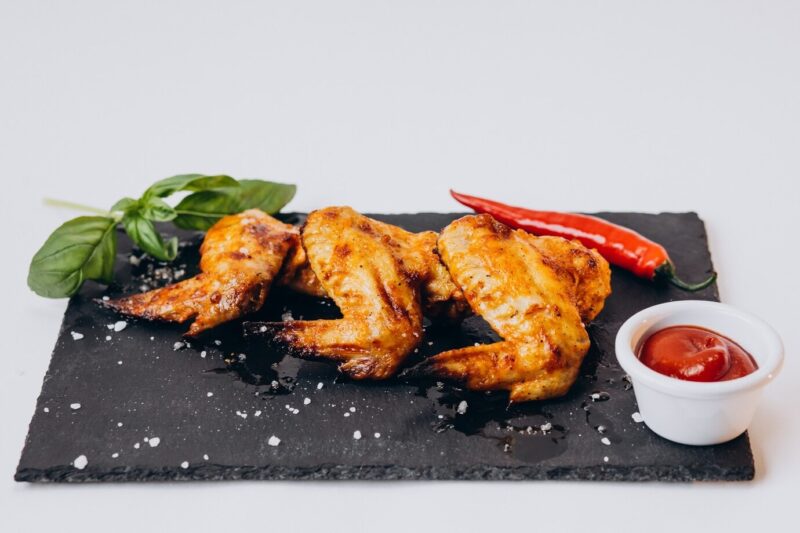
When it comes to butchering chicken wings, there is both an art and science to breaking down a whole chicken wing. Whether you’re a seasoned chef or a passionate home cook, the mastery of transforming a whole chicken wing into the coveted wingettes and drumettes requires the use of some essential tools. A sharp knife or durable kitchen shears are non-negotiables in your kitchen toolkit.
Each whole chicken wing is composed of three parts: the drumette, the flat, or wingette, and the often-overlooked wingtip. The first step in wingtip removal is identifying the joints. With a firm grip, you can use your sharp knife to slice through the joint with precision, or employ kitchen shears for a swift snip. This joint separation is crucial as it delineates the line where the drumette and wingette will part ways.
I’ve learned that the finesse of butchering chicken wings is a skill sharpened over time. Through practice, the once daunting task of joint separation becomes as natural as slicing bread.
Once the wingtip is removed, the next step involves separating the flat from the drum. Some enthusiasts find this part of the process unexpectedly rewarding. Feeling for the give in the joint allows for an easier cut and results in a clean break. However, be mindful to discard the wingtips or set them aside for stock—their bony composition offers little meat, but in a good stock, their deep flavor is a treasure.
The pursuit of convenience has bestowed upon us ‘party wings’, a godsend for those who would rather skip the butchering process. These pre-separated wingettes and drumettes can go directly onto the grill or into the fryer, serving up a no-fuss approach to your wing feast.
Let’s break down the steps to ensure a successful butchering experience:
- Secure your whole chicken wing, and identify the wingtip.
- Use a sharp knife or kitchen shears to remove the wingtip at the joint.
- Find the joint between the wingette and drumette and cut through to separate them.
- Reserve the wingtips if you desire them for stock or discard them.
Here’s a look at the anatomy of the whole chicken wing and the resulting pieces after butchering:
| Chicken Wing Part | Preparation Notes | Usage |
|---|---|---|
| Wingtip | Often removed and can be used to make flavorful stock | Stock and broths |
| Wingette/Flat | Separated after wingtip removal, sought after for its skin and sauce retention | Main dishes, appetizers, party platters |
| Drumette | Meaty section resembling a mini drumstick, perfect for dipping | Buffalo-style wings, barbecue, dipping |
As I stand before the butcher’s block, the transformation of a whole chicken wing into its constituent parts is not just prep work—it’s the anticipation of the delicious party wings to come, crafted with my own hands and tools. It’s an act that merges tradition with personal touch, ensuring the journey from butcher’s block to dinner plate is a rewarding one.
Texture and Taste: The Sensory Experience of Wingettes vs Drumettes
When it comes to the culinary delight of poultry, my preferences lean prominently on the cornerstones of texture and taste. In the great wing debate, each contender brings a distinctive sensory experience to the table. I revel in the gastronomic delights of wingette flavor and equally appreciate the drumette advantage. As I draw upon my wealth of kitchen escapades, I find there’s a profound sensory journey involved in the wingette versus drumette discussion, deeply rooted in crispy chicken skin, and the succulent chew of meat.
Savoring the Skin: Wingettes’ Crispy Advantage
The wingette has long been celebrated for its crunch factor—a testament to the art of cooking crispy wings. With a shape that graciously welcomes an even distribution of heat, the flat surface of the wingette is a perfect canvas for optimal sauce coverage, allowing each wingette to be sufficiently coated and to carry the sauce’s flavor with every mouthful. The tactile satisfaction of breaking through that initial crispy layer to uncover the tender meat beneath cannot be overstated.
Nothing quite matches the satisfaction of biting into impeccably cooked chicken wings, where the exterior offers a symphony of crispness that yields to the tender flesh.
As I delve into the technicalities of achieving that flawless crispy skin, consider the methods I’ve honed: a pre-heat ritual, attentive flipping, and the finale of basting with a deft touch. It’s a culinary ballet that culminates in wingettes that embody the signature of true wing connoisseurship.
A Meaty Matter: Why Drumettes Dominate in Volume
Moving beyond the sheer pleasure of the crunch, we land on the substantial meatiness of chicken drumstick similarity. The drumette, reminiscent of the iconic drumstick, stands out with its generous meat-to-bone ratio, promising a heartier and more filling bite. As a welcomed vessel for dips, the drumette’s natural handle endows it with an irresistibly dip-friendly chicken attribute that’s perfected when submerged into a cove of blue cheese for wings.
The alchemy of savory chicken laced with the tartness of quality blue cheese dressing is an experience in itself; one that motivates my return to the drumette time and again. Drenched or delicately dipped—the drumette accommodates all styles of sauce enthusiasts.
Let the following table serve as a sensory guide, capturing the essence of each wing part as it addresses the very fibers of our palate:
| Chicken Wing Part | Texture | Taste | Preferred Dipping Sauce |
|---|---|---|---|
| Wingette | Crisp Exterior | Rich, Sauce-Laden | Varied Sauces |
| Drumette | Juicy Interior | Meaty, Savory | Blue Cheese Dressing |
The intrinsic delight of wingettes versus drumettes hinges on whether you lean towards savory crunch or meaty satisfaction, and my stance is firm—I’m an enthusiast of both. Each holds its own in the sensory balance of flavor and texture, and gratefully, the chicken wing doesn’t necessitate a choice—it invites a celebration of the whole.
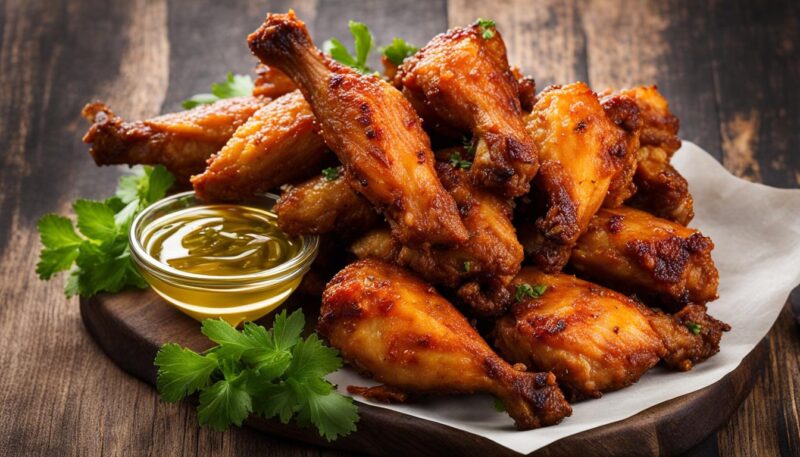
Wingettes vs Drumettes in the Kitchen: Cooking Methods Explored
As we delve into the kitchen, a realm where culinary magic takes flight, the comparison of wingette and drumette recipes unveils a spectrum of cooking styles that cater to the varied palates of chicken wing aficionados. With the quest to achieve the perfect blend of texture and flavor, the chicken wing cooking techniques we choose can transform these humble poultry pieces into gastronomic gold.
The debate between wingettes and drumettes goes beyond anatomy and right into the heart of cooking methods. Some swear by the smoky richness of smoked chicken wings, which infuses deep flavor into the meat, setting off umami sensations that linger on the palate. Others champion the allure of crispy wing preparation, where the exterior crackles under tooth, creating a sensory delight.
I have always found that the method of cooking wings can be just as polarizing as choosing between flats or drums. It’s not just a matter of taste—it’s about the experience you’re seeking from your chicken wings.
Understanding that the distinction between wingettes and drumettes isn’t just skin-deep, and exploring distinctive cooking methods for each, let’s break down some of the culinary techniques that highlight their inherently delicious features.
| Wing Section | Smoking Technique | Crispy Preparation |
|---|---|---|
| Wingette (Flat) | Smoked at lower temperatures to infuse flavor while retaining moisture | High heat roasting or frying to crisp the skin without overcooking the thin meat |
| Drumette | A longer smoking time brings out the richness of the denser meat | Baking on a wire rack or sizzling in a hot fryer for an evenly crisped exterior |
For each type, the technique steers the final product. The wingette, with its vast expanse of skin, thrives under a high-heat regime that crisps it to golden perfection, while the drumette’s density leans into the subtle art of smoking, allowing the meat to bathe in the smokiness that infuses deep within.
- Prepare your smoker or set your oven/high-heat source depending on which part of the wing you’re cooking.
- Give attention to the duration and temperature—these are the make-or-break details for creating divine wings.
- Choose your finish—sauce-lathered or dry-rubbed, it should complement the cooking method employed.
The beauty of these cooking methods? They offer an endless terrain for experimentation. The wingette and drumette recipes that you craft can hinge on tradition or venture into innovation, with each method offering a unique pathway to poultry enjoyment.
The true beauty of chicken wings lies in their versatility. Whether they’re smoked, roasted, or deep-fried, both wingettes and drumettes have the potential to turn into an irresistible dish that beckons for just one more bite.
In the end, whether smoked to succulent perfection or crisped to a rousing crunch, it is the passion and technique behind every wing preparation that elevates the humble drumette or wingette from mere finger food to a culinary centerpiece.
Understanding Wing Anatomy: The Breakdown of Chicken Wing Types
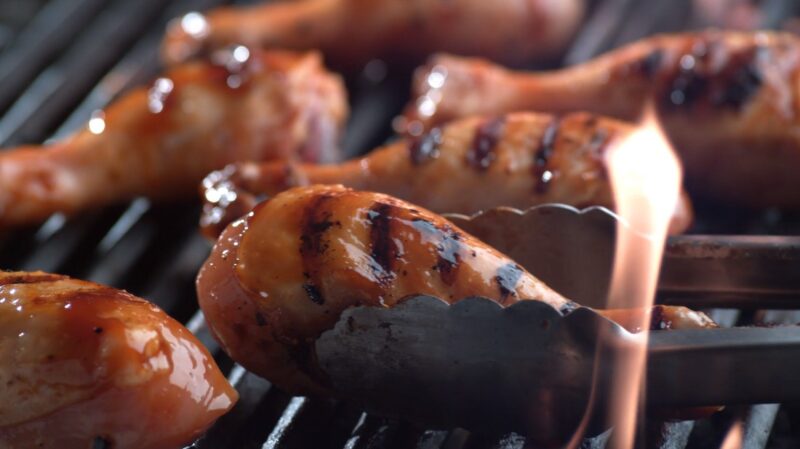
When I first discovered the intricacies of whole wing anatomy, it was a revelation that would shape my culinary pursuits. Platter after platter of *Chicken wing types* — from Buffalo tavern staples to my home kitchen experiments — led me to appreciate the nuanced differences and preparing methods of each wing segment.
From Whole Wings to Party Favorites: Wingettes and Drumettes Defined
Before wings make their way to the fiery grill or the sizzling fryer, they start as a whole unit. This unit includes the drum, the flat, or wingette, and the wingtip, each contributing to the whole wing anatomy.
As I mastered the art of converting whole wings into ready-to-cook pieces, a new kind of respect formed for the selection and preparation process known as party wing selection. The transition from a full, intact wing to neatly separated wingettes and drumettes is a rewarding experience, one that I aim to share for those who might find themselves hosts to a bevy of wing-hungry guests.
Knowing how to cleanly separate the drum from the flat at the joint, and decide whether to keep or dispose of the wingtip, allows me to cater to various tastes. Each guest might come to my table with a different wing preference — some singing praises of the flat for its crispy skin and easy sauce soak, others staunchly defending the meatier drumette for its substantial bite and dip-ability.
A whole chicken wing represents potential — what it becomes on your plate can vary as greatly as the variety of sauces and seasonings that adorn it.
| Part of Wing | Features | Preferred Cooking Method |
|---|---|---|
| Drumette | Meat-rich, single bone, resembles mini drumstick | Frying, Grilling |
| Wingette/Flat | Two bones, higher sauce retention, evenly crisped skin | Baking, Broiling |
| Wingtip | Mostly bone and skin, often discarded or used for stocks | Broth-making, No direct culinary use |
To those new to the artistry of breaking down a wing, distinguishing between a wingette vs drumette might seem daunting. And yet, these distinguishing features soon become intuitive markers, guideposts leading to mouthwatering results. It’s about understanding the anatomy, recognizing the potential of each segment, and executing the cut with precision.
- The drumette, anchored by a single bone, is a harmonious balance of skin, meat, and convenience, assuming its place at the top tier of finger foods.
- The wingette, with a gracious skin-to-meat ratio, is a beloved canvas for chefs to unleash their boldest sauces and rubs, offering up its flats for maximum coverage and enjoyment.
In dissecting the whole wing anatomy, it’s remarkable to see how each individual component — so unique in its culinary capabilities — comes together to form the quintessential party wing selection.
The journey from unassuming whole wings to the indulgent spread before us gives me pause — not just to savor the flavors but to appreciate the transformative power of understanding and selecting just the right wing segment for the occasion.
Nutrition Faceoff: Wingettes vs Drumettes on the Health Scale
As an avid chicken wing enthusiast, I’ve often found myself mulling over the nutritional aspects of my favorite appetizer—specifically, the wingettes vs drumettes nutrition. It’s a common query at tailgates and dinner parties alike: which wing part tips the health scales in its favor? Let’s crunch not just the crispy skin but some nutritional numbers as well.
The health benefits of chicken wings, in general, are tied closely to their protein content. However, the chicken wing calorie content we often worry about, as well as the fat figures, are influenced by the natural anatomy of these beloved morsels. Wingettes, with more skin per bite, tend to absorb cooking oils and sauces more, while drumettes with their higher meat ratio can provide a more protein-rich snack.
Yet, when comparing these wing sections, one must consider more than the immediate satisfaction of crunchy indulgence; the long-term implications on health should also feather into our choice. Understanding the nutritional information of what we eat is vital—especially for those who are health-conscious but still want to enjoy the culture and camaraderie that is part and parcel with wing consumption.
As I navigate the skillet of wing preparation, I ensure my seasoning choices and cooking methods honor both taste and well-being. Cooking at home allows me to manage the calorie content with methods such as baking or air-frying, which tend to require less oil than traditional frying. Yet, even as I strive for healthier wings, I don’t skimp on the flavorful experience. Savoring the protein in wings, along with their array of vitamins and minerals, turns each bite into a gratifying balance of responsibility and relish.
Knowing the calorie, fat, and protein content in each wing piece helps in making informed decisions that align with dietary goals, all while delighting in the traditions and flavors that chicken wings have to offer.
| Wing Section | Calorie Content | Fat Content | Protein Content |
|---|---|---|---|
| Wingette | Higher due to skin | Higher due to skin and cooking method | Comparable to Drumette |
| Drumette | Lower relative to skin ratio | Lower relative to meat content | Higher due to more meat |
In my culinary explorations, I’ve reaffirmed that both wingettes and drumettes can be part of a balanced diet if prepared with attention to their cooking methods and sauce choices. The versatility of chicken wings is not just in the myriad of recipes available but also in the various ways they can complement a mindful eating plan. Acknowledging the depth of character in each wingette and drumette not only satisfies my soul but aligns with my health-focused perspectives.
- Opt for baking or grilling to reduce added fats.
- Choose herbs and spices over heavy sauces to manage calorie intake.
- Enjoy in moderation as part of a balanced diet.
In conclusion, while the option for wingettes or drumettes may not solely be governed by their calorie or fat content, these factors are worth considering when balancing our enjoyment with our well-being. I invite fellow wing aficionados to join me in delving deep into the delicious yet health-conscious side of the wing world—a pursuit that’s sure to bring us both nutritional benefits and gastronomic pleasure.
Inventive Recipes: Elevating Wingettes and Drumettes to Gourmet Heights
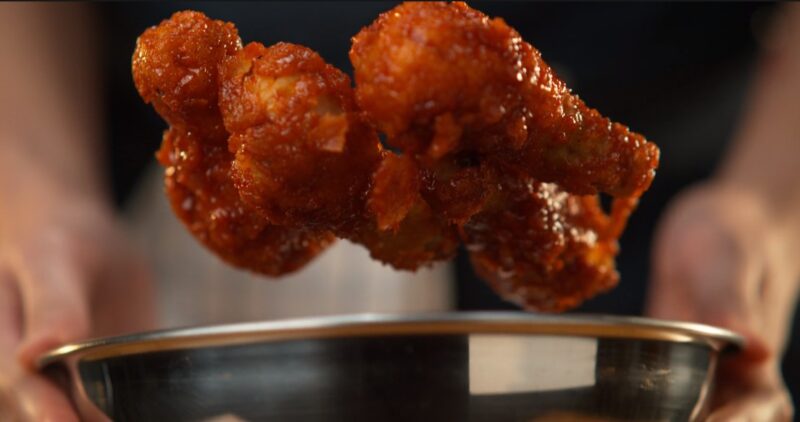
Embarking upon a journey through the world of delicious wingette and drumette recipes, I often find my kitchen transforming into an experimental hub where gourmet chicken wing ideas take flight. Both wingettes and drumettes serve as versatile canvases for a plethora of creative cooking methods, allowing the home cook to infuse both tradition and innovation into their dishes. It is here where sauced wings meet their match with smoked wings, creating a fusion of flavors that redefine the simple pleasure of wing-eating.
Dazzling Dishes: From Sauced to Smoked
The key to elevating these bite-sized delights lies in the balance of sauce and smoke. A carefully concocted sauce can become a signature delicacy, while the intricate process of smoking infuses a depth of flavor that is as intoxicating as it is satisfying. Whether you’re developing smoked wings with a hint of applewood or lathering wingettes in a glaze that whispers of honey and garlic, the potential for culinary brilliance is boundless.
There’s an art to crafting wing sauces—the convergence of heat, sweetness, tang, and zest—that when done right, results in sauced wings that speak to the soul of the gourmet.
Here, I present to you a table of my personal favorite wing recipes, each balancing the nuanced flavors and textures that make wingettes and drumettes not just a meal, but an experience:
| Recipe Name | Wingette or Drumette | Sauce Flavor Profile | Smoke Technique |
|---|---|---|---|
| Maple-Mustard Glazed Wings | Wingette | Rich maple with a pungent mustard twist | None |
| Hickory Smoked Honey BBQ Wings | Drumette | Sweet honey meets bold BBQ | Hickory slow-smoked |
| Spicy Korean-Style Gochujang Wings | Wingette | Fiery, sweet, and umami-rich gochujang base | None |
| Herb-Infused Smoked Wings | Drumette | Fresh herbs and a hint of citrus | Applewood-smoked for subtlety |
Let’s not forget that the journey of cooking wings is as delightful as devouring them. From prepping the marinades to the final plating, every step is a chapter in the story you’re crafting. It is with sheer joy that I watch these wings transform in my kitchen, taking on personas from smoky to saucy, each with their unique capacity for captivation.
- Balance the wing sauce with the smoking process for complementary flavors.
- Experiment with different woods when smoking to find the perfect match for your chosen sauce.
- Apply sauce to the wings at the right moment—too early, and it can burn; too late, and it won’t adhere correctly.
To be a true wing artist, one must not shy away from the daring and the unconventional. Whether it’s introducing a hint of espresso to your BBQ sauce to awaken the palate or marrying Asian spices with traditional Southern smoking techniques, the goal is to create not just a meal but a story; a story told with every smoky, saucy bite.
As I sit at my dining room table, wings perfectly arranged, I realize that these are not just gourmet dishes; they are edible tales of craft and creativity.

Drumming Up the Controversy: Personal Preferences and Cultural Ties
Anyone steeped in the culinary controversy of the wingette or drumette debate knows that personal wing preferences aren’t just whims; they are declarations of one’s taste, experience, and often, cultural backdrop. Whether it’s a Buffalo native who lives and breathes the drumette or a Southern soiree where wingettes are the culinary celebrities, there’s more at stake here than meat on a bone.
My exploration into the chicken wing phenomenon uncovers that each wing choice speaks volumes about regions, traditions, and the cultural impact of chicken wings.
Surveying the landscape of chicken wing lovers, we uncover a tableau of preferences that assert their presence in the great chicken wings discourse. Just as barbecue masters debate the merits of sauces and rubs, wing enthusiasts are torn between the simplistic joy of wingettes with their crispy potential or the wholesome allure of a drumette’s meaty bite. But why does this matter at a cultural level?
Join me as I lay out the cultural and personal factors that drive the wingette and drumette saga, a narrative steeped in regional pride and the shared history of communities. This isn’t merely about poultry; it’s about identity, conviviality, and, importantly, the culinary legacies inherited and upheld over generations.
Here’s how the scale of preference tends to tip:
- In the northeast, particularly around Buffalo, NY, there seems to be an equal adoration for both wings, but with a slight edge towards drumettes, a nod to tradition and perhaps a matter of practicality—easier to dip, easier to eat.
- Down South, there’s a penchant for flat wingettes, which mingle happily with a myriad of deep-fried traditions and boast a texture that nails the crunch and chew duality.
- On the West Coast, a more health-conscious approach sees a universal appeal for both, with a trend towards more innovative cooking methods.
Sometimes, it’s more than just cultural—it’s familial. I remember a Thanksgiving where the debate took center stage, with each family member staking their claim over their preferred piece. The choice revealed not only their palate preferences but echoed stories, histories, and a deep-seated connection to our shared meals.
But how does this debate fare on the global front? It appears that worldwide, wingettes and drumettes are customized to regional tastes—teriyaki glazes in Japan, fiery peri-peri in South Africa, and tangy lemon-and-herb in the Mediterranean, each style making a distinct cultural imprint on the humble wing.
In the midst of such diversity, I unearth a unifying thread that binds the drumette and wingette loyalists—not just a love for flavor, but for the experiences that their preferred wing evokes. It’s a celebration of chicken wings laced within a broader culinary tapestry.
I’ve constructed a table that encapsulates these preferences across different spaces:
| Region | Preferred Wing | Cultural Relevance |
|---|---|---|
| Buffalo, NY | Drumette | Birthplace of Buffalo wings; drumettes are a nod to wing origin stories |
| Southern USA | Wingette | Complements the regional affinity for crunchy, deep-fried foods |
| West Coast USA | Both | Reflects a dynamic food scene and health-conscious trends |
The wingette or drumette debate does not seek a victor; instead, it showcases the rich, variegated fabric of culinary preferences shaped by our cultures, memories, and palates. It’s a lively culinary controversy where every choice nourishes not just our bodies but our collective stories and identities as well.
Conclusion: Savoring the Wings of Preference
In the heated crucible of the Wingette vs Drumette Debate, I’ve watched preferences ignite passions and seen debates simmer down to a companionable sizzle. The tie that binds is not which side wins but the shared zeal that both wing factions celebrate with equal fervor. Every foray into this poultry squabble reveals a simple truth: the ultimate resolution lies in the joy of choice, the pleasure of the taste, and the satisfaction of sinking your teeth into your favorite piece.
Whether it’s the wingette’s allure, with its crispy potential relished by sauce lovers, or the drumette’s promise of a fulfilling, meaty bite, championed by those who crave a dip-worthy experience, there is no waning of the fire they stoke in the hearts of chicken wing aficionados. Embracing wing diversity is what fuels the culinary celebration of wings. With each camp steadfast in loyalty, it’s evident that the richness of chicken wings lies in their ability to offer something for every palate.
As I profess my affinity for both sides of the wing continuum, I take solace knowing that for every divided table of wingette and drumette devotees, there is a larger, united congregation of wing lovers rejoicing in the multitude of flavors and textures. The wing selection satisfaction is a personal journey, one that meanders through cherished traditions and individual whims. In the end, whatever part of the chicken wing one extols, the universal language of delectable delight remains our common chorus.
FAQ
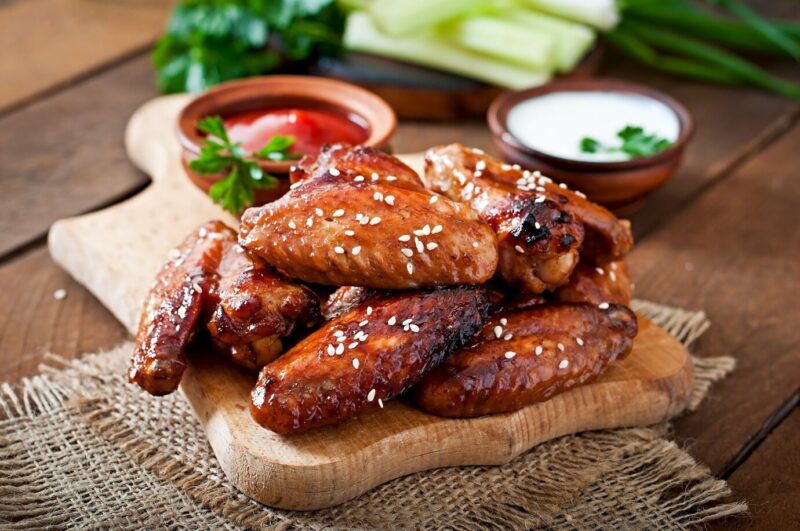
What Is at The Heart of The Wingette vs Drumette Debate?
The Wingette vs Drumette Debate centers on personal preferences between two cuts of chicken wings: the wingette (also known as a flat), which is known for its high skin-to-meat ratio and crisp texture when cooked, and the drumette, which resembles a mini drumstick and is known for its meatiness and ease of handling. The debate fuels discussions about which cut offers the best flavor, texture, sauce retention, and overall eating experience.
What Are the Pros and Cons of Wingettes and Drumettes?
The pros of wingettes include better sauce coverage due to their shape and more crispy skin for texture lovers. On the downside, they have less meat and can be more difficult to eat because of the two bones. Drumettes, on the other hand, offer a meatier bite and are easier to dip and eat thanks to their single bone, but they have less crispy skin and may be less satisfying for those who prioritize crunchiness and sauce.
How Did Buffalo, Ny Contribute to The Chicken Wing Culture?
Buffalo, NY is revered as the birthplace of the classic Buffalo chicken wing. Notable establishments like the Anchor Bar and Duff’s, among others, have played a pivotal role in popularizing chicken wings, transforming them from simple appetizers to a celebrated culinary experience. These iconic eateries have also contributed greatly to the wingette versus drumette discourse by perfecting how the wings are cooked and served, thus enhancing the sensory characteristics of each wing section.
How Do I Properly Prepare Whole Chicken Wings Into Wingettes and Drumettes?
To separate a whole chicken wing into wingettes and drumettes, use a sharp knife or kitchen shears. Start by cutting the wing at the joint to remove the wingtip, which is often used for stock due to its small amount of meat. Next, find the joint between the flat and the drum and cut through it to separate them. Alternatively, one can purchase “party wings” that are already pre-cut for convenience.
Which Cooking Methods Are Best for Wingettes and Drumettes?
Both wingettes and drumettes can be cooked using a variety of methods, including smoking, baking, grilling, and frying. Smoking wings adds a deep, savory flavor while creating a tender texture. High-heat cooking methods like frying or grilling result in a crispy skin that’s highly prized by enthusiasts. The choice of cooking method may vary depending on personal taste and the desired end result.
Are There Nutritional Differences Between Wingettes and Drumettes?
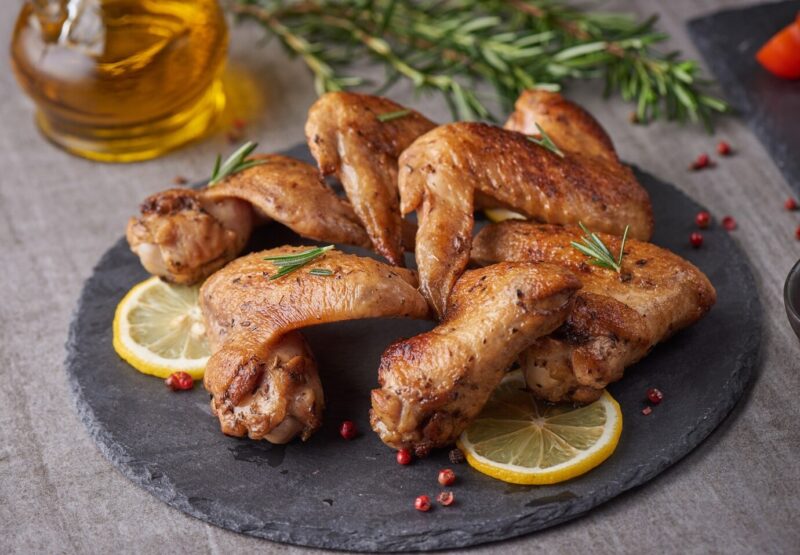
While wingettes and drumettes are similar in protein content, there can be differences in calories and fat due to the varying amounts of skin and meat. Usually, wingettes, with more skin, can have a slightly higher calorie and fat content compared to drumettes. Nutritional preferences might sway someone’s choice if they are looking to balance indulgence with a health-conscious diet.
Can You Give Tips on How to Elevate Wingettes and Drumettes to Gourmet-Level Dishes?
To elevate wingettes and drumettes into gourmet dishes, consider experimenting with unique sauce blends or marinades that fuse contrasting flavors like sweet, spicy, sour, or umami. Smoking the wings can also add a sophisticated layer of flavor. Don’t hesitate to pair them with artisanal dips or garnishes, and for a visual gourmet touch, plate them artistically with fresh herbs or edible flowers.
Are Wing Preferences Shaped by Personal Taste or Cultural Influence?
Both personal taste and cultural influence play significant roles in shaping wing preferences. Individual dining experiences, texture and flavor predilections, or even how one was introduced to chicken wings can determine their choice. Moreover, certain regions may have a prevailing preference, whether due to historical traditions or local culinary influences, making the choice of wingette or drumette not just a matter of taste but also a reflection of cultural identity.
How Should I Choose Between Wingettes and Drumettes?
Choosing between wingettes and drumettes often comes down to one’s preference for certain textures and flavors. Consider whether you prioritize a crispy texture and high sauce retention or a meaty bite and easier handling. It’s worth trying both to determine which characteristics you value more. Additionally, consider any nutritional preferences or the type of event you’re preparing for, as this might influence the best choice for the occasion.

